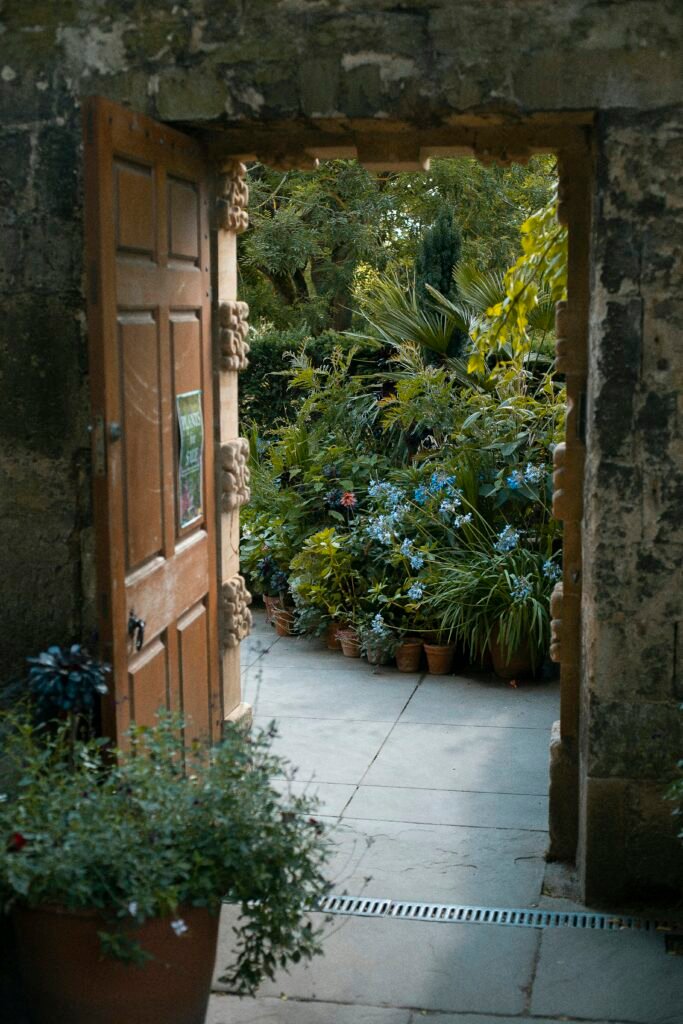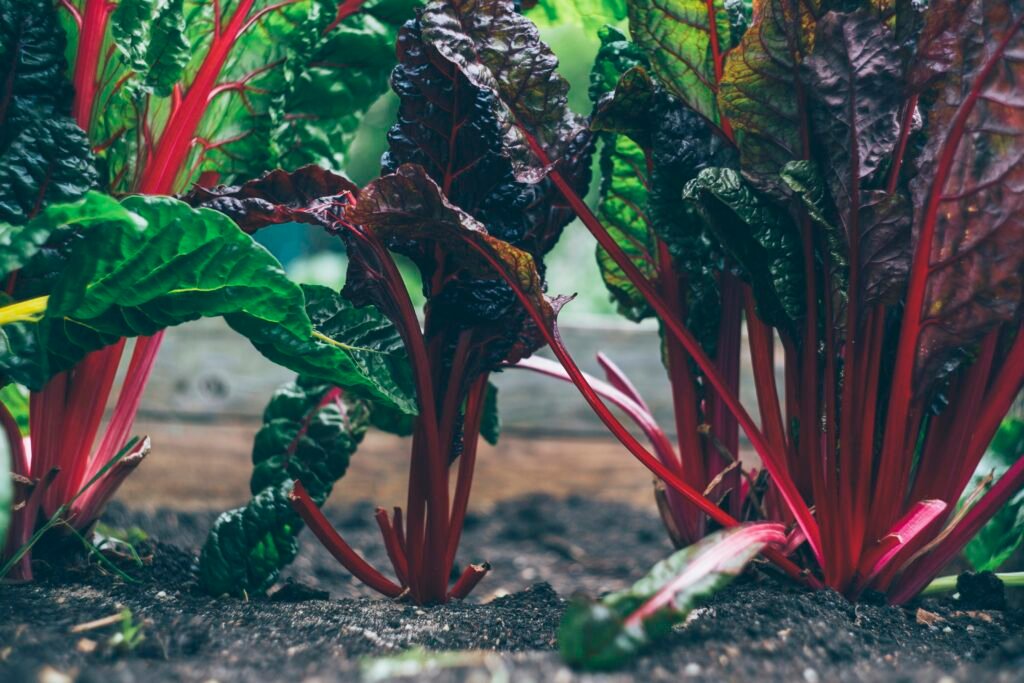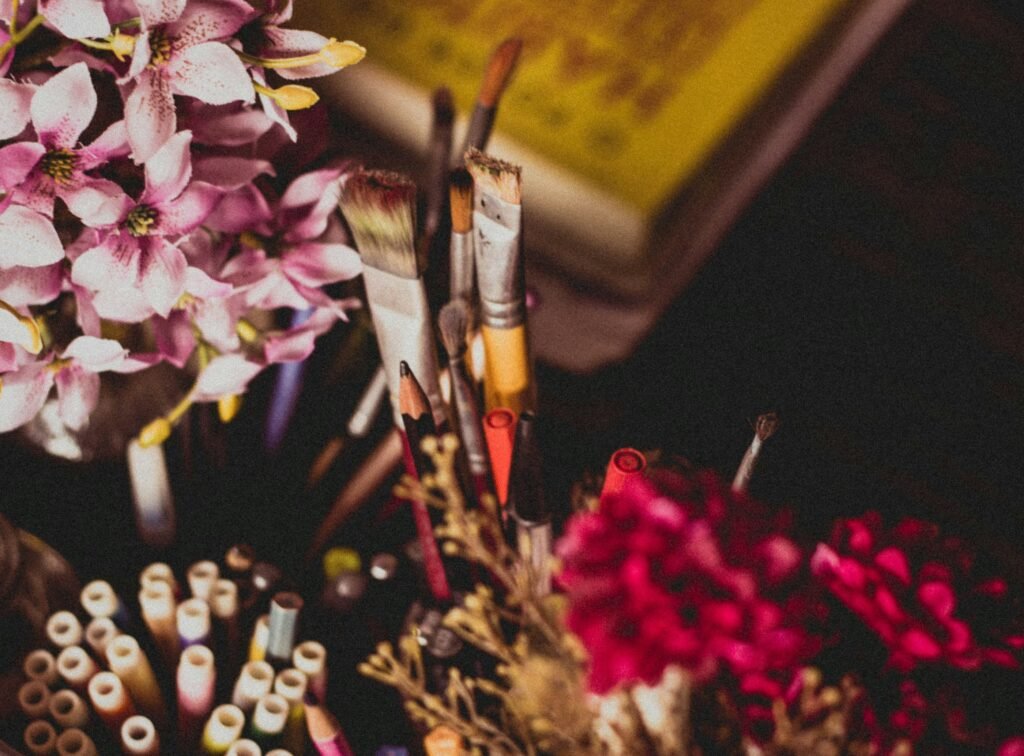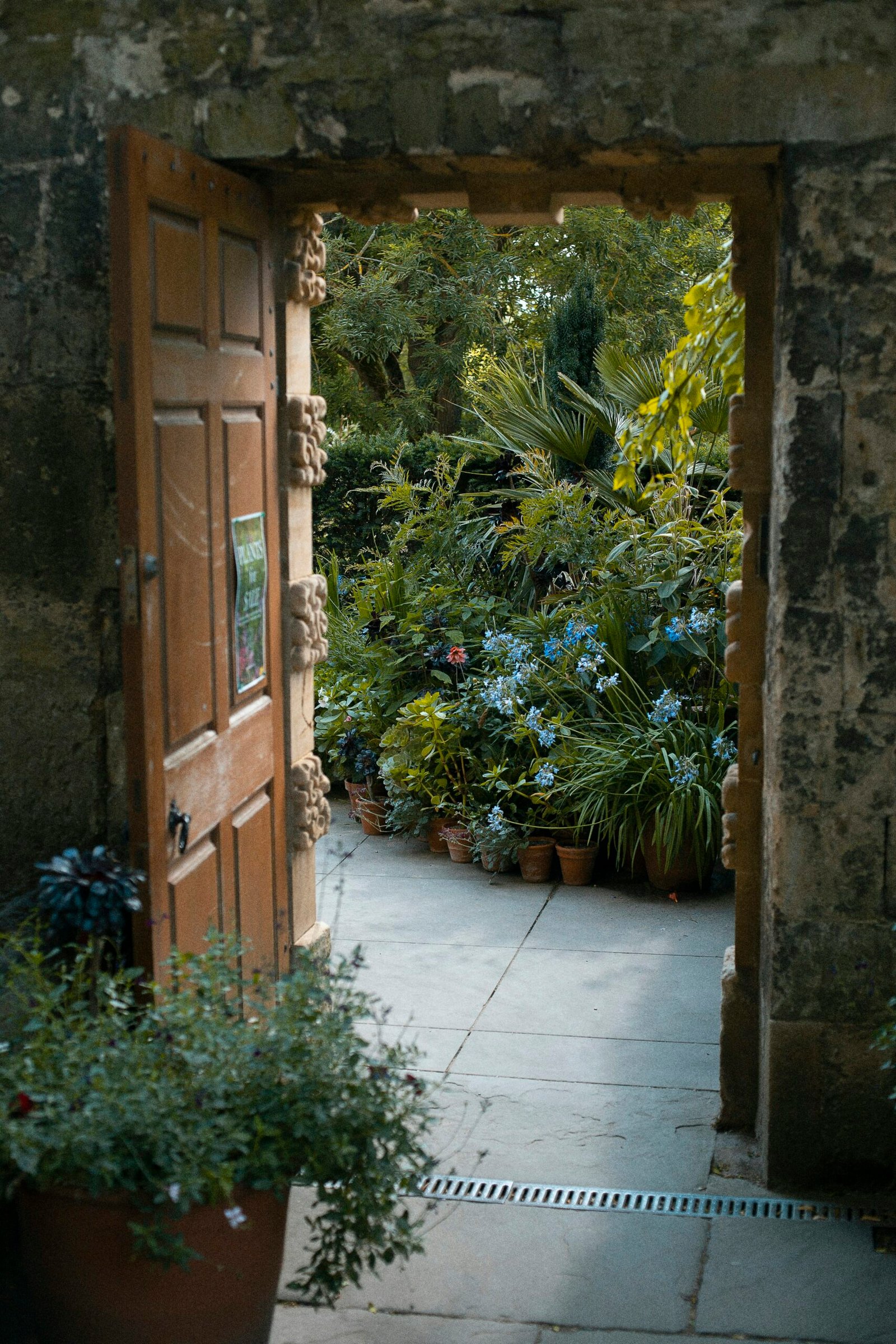Looking to add a touch of creativity and eco-friendliness to your garden? Look no further! In this article, we will explore some fantastic ideas for upcycled crate garden planters. Whether you have old wooden crates lying around or want to repurpose crates you find in thrift stores, these ideas will help you transform them into stunning planters that will surely impress your friends and neighbors. Get ready to unleash your inner artist and elevate your garden to new heights with these unique and sustainable creations.

This image is property of images.unsplash.com.
DIY Crate Hanging Garden
If you’re looking for a creative and space-saving way to showcase your plants, a DIY crate hanging garden is the perfect solution. With just a few simple materials and a little creativity, you can create a stunning hanging garden that will add a unique touch to your home or outdoor space. Let’s walk through the step-by-step process of creating your own DIY crate hanging garden.
Selecting the crates
The first step in creating your DIY crate hanging garden is to select the crates you will be using. You can either repurpose old wooden crates or purchase new ones from a local craft store. When choosing your crates, make sure they are sturdy and in good condition. Consider the size and shape of the crates as well, as this will determine how many plants you can fit in each crate.
Preparing the crates
Once you have chosen your crates, it’s time to prepare them for planting. Start by sanding down any rough edges or splinters on the crates to ensure a smooth surface. If your crates have any labels or stickers, gently remove them with warm soapy water. Afterward, let the crates dry completely before moving on to the next step.
Creating hanging hooks
To hang your crates, you will need to create hanging hooks. This can be done using simple hardware such as eye screws or cup hooks. Start by measuring the desired height between each crate and mark the spots on the back of the crates where you will attach the hooks. Screw the hooks into the marked spots, making sure they are secure and can hold the weight of the crate and the plants.
Arranging the plants
Now that your crates are ready, it’s time to arrange your plants. Choose a variety of plants that thrive in hanging conditions, such as trailing vines or cascading flowers. Start by adding a layer of potting soil to each crate, then carefully place your plants, making sure to leave enough space for them to grow. Consider mixing different plant types and colors to create a visually stunning arrangement. Once your plants are in place, water them thoroughly and make sure to hang your crates in a location that receives the appropriate amount of sunlight for your plants’ needs.
Vertical Crate Garden Tower
If you’re short on space but still want to maximize your gardening potential, a vertical crate garden tower is the perfect solution. This innovative gardening method allows you to stack crates on top of each other, creating a vertical tower of lush greenery. Let’s explore how to create your own vertical crate garden tower.
Choosing the crates
Start by choosing the crates you will be using to build your vertical garden tower. Look for crates that are sturdy, durable, and have openings at the bottom for proper drainage. You can either repurpose old crates or purchase new ones from a local store. Consider the size and shape of the crates, as they should be able to stack easily on top of each other.
Stacking the crates
Once you have selected your crates, it’s time to start stacking. Begin by placing one crate on the ground or a stable surface. Add a layer of potting soil to the bottom of the crate, making sure it is evenly spread. Place the second crate on top of the first one, aligning the openings. Repeat this process for as many crates as you would like to stack, making sure to fill each crate with potting soil as you go.
Securing the tower
To ensure your vertical garden tower stays sturdy and secure, it’s important to secure the crates together. You can do this by using zip ties or sturdy rope. Start by threading a zip tie or rope through the openings of the crates, pulling them tight to keep the crates in place. Make sure to tie the zip ties or knot the rope securely to prevent the tower from shifting or toppling over.
Planting in the crates
With your vertical garden tower assembled and secured, it’s time to start planting. Choose a variety of plants that thrive in compact spaces and have shallow root systems. Herbs, succulents, and small flowers are all great options. Fill each crate with potting soil, leaving enough space for the plants to grow. Carefully plant your chosen plants, making sure they are evenly spaced and have enough room to thrive. Water your plants thoroughly and make sure to place your vertical garden tower in a location that receives the appropriate amount of sunlight for your plants’ needs.

This image is property of images.unsplash.com.
Crate Herb Garden
Herbs are a versatile and flavorful addition to any garden. With a crate herb garden, you can have fresh herbs at your fingertips whenever you need them. Creating a crate herb garden is a fun and simple DIY project that anyone can enjoy. Let’s explore how to set up your own crate herb garden.
Finding suitable crates
The first step in creating a crate herb garden is to find suitable crates. You can repurpose old wooden crates or buy new ones from a craft store. Look for crates that are sturdy, have a good amount of depth, and can hold the weight of the soil and plants. It’s also important to make sure the crates have proper drainage holes to prevent water from pooling.
Setting up the herb garden
Once you have your crates, it’s time to set up your herb garden. Start by placing the crates in a location that receives ample sunlight, preferably near your kitchen for easy access to your herbs. If your crates don’t have drainage holes, you can easily create them by using a drill or a hammer and nails. Line the bottom of the crates with a layer of rocks or gravel to aid in drainage.
Choosing the herbs
Next, choose the herbs you would like to plant in your crate herb garden. Consider the herbs you use frequently in your cooking and those that grow well in your climate. Popular options for a crate herb garden include basil, rosemary, thyme, parsley, and mint. You can plant multiple herbs in each crate or dedicate a crate to a single herb – it’s up to you and your gardening preferences.
Caring for the herb garden
Once your herbs are planted, it’s important to care for your crate herb garden to ensure healthy growth. Water your herbs regularly, keeping the soil moist but not waterlogged. Herbs generally do best with 6-8 hours of sunlight per day, so make sure your herb garden is in a location that receives adequate sunlight. Harvest your herbs regularly, using them in your cooking to promote new growth. With proper care and attention, your crate herb garden will flourish, providing you with fresh and flavorful herbs year-round.
Crate Succulent Planter
Succulents have become incredibly popular in recent years, and for good reason. These low-maintenance plants come in a variety of shapes and colors, making them a perfect addition to any garden or indoor space. Creating a crate succulent planter is a simple and stylish way to display your succulent collection. Let’s dig into how to create your own crate succulent planter.
Sourcing the crates
The first step in creating a crate succulent planter is to source the crates. Look for wooden or metal crates that have a rustic or vintage feel to enhance the overall look of your succulent planter. You can often find these crates at flea markets, thrift stores, or even online. Make sure the crates are in good condition and have proper drainage holes.
Preparing the crates
Once you have your crates, it’s important to prepare them for planting. Start by cleaning the crates to remove any dirt or debris. If necessary, use sandpaper to smooth out any rough edges or splinters. If your crates don’t have drainage holes, you can create them by using a drill or hammer and nails. Proper drainage is essential for the health of your succulents, as they can easily become waterlogged and rot.
Arranging the succulents
Now it’s time to arrange your succulents in the crates. Start by filling the crates with a well-draining potting mix specially formulated for succulents. Make sure to leave enough space to accommodate the roots of your succulents. Choose a variety of succulent varieties with different colors, textures, and sizes to create an eye-catching arrangement. Carefully remove the succulents from their pots and plant them in the crate, gently pressing the soil around the roots to secure them in place.
Caring for the succulent planter
Succulents are known for their ability to thrive in dry conditions, making them relatively low-maintenance plants. To care for your crate succulent planter, water the succulents sparingly, allowing the soil to dry out between waterings. Succulents prefer bright, indirect sunlight, so make sure to place your planter in a location that receives adequate light. Avoid overwatering, as this can lead to root rot and other issues. With minimal care, your crate succulent planter will serve as a beautiful and long-lasting display of nature’s resilience.

This image is property of images.unsplash.com.
Crate Vegetable Garden
If you’ve always dreamed of growing your own vegetables but lack yard space, a crate vegetable garden is the perfect solution. With a few simple materials and your choice of vegetables, you can create a productive and space-saving vegetable garden right on your patio or balcony. Let’s dive into how to create your own crate vegetable garden.
Selecting the crates
The first step in creating a crate vegetable garden is to select the crates you will be using. Look for crates that are deep enough to accommodate the root systems of your chosen vegetables. You can repurpose old wooden crates or purchase new ones from a local store. Make sure the crates are sturdy and have proper drainage holes to prevent waterlogging.
Preparing the crates
Once you have your crates, it’s important to prepare them for planting. Start by cleaning the crates to remove any dirt or debris. If necessary, sand down any rough edges or splinters. Line the bottom of the crates with landscaping fabric or newspaper to prevent soil from leaking out of the drainage holes. Fill the crates with a high-quality potting mix enriched with compost or fertilizer to provide your vegetables with the nutrients they need to thrive.
Choosing the vegetables
Next, it’s time to choose the vegetables you would like to grow in your crate vegetable garden. Consider the size and depth of the crates when selecting your vegetables, as some varieties may require more space than others. Popular choices for a crate vegetable garden include lettuce, radishes, herbs, cherry tomatoes, and peppers. You can even plant a variety of vegetables in each crate for a diverse harvest.
Planting and caring for the vegetables
Once you have chosen your vegetables, it’s time to plant them in the crates. Follow the instructions on the seed packets or plant labels to determine the appropriate planting depth and spacing for each vegetable. Make sure to water your vegetables regularly, keeping the soil evenly moist. It’s also important to monitor your vegetables for pests and diseases and take appropriate measures to prevent or treat them. With proper care and attention, your crate vegetable garden will provide you with a bountiful harvest that you can enjoy and share with others.
Crate Flower Garden
Flowers have the ability to brighten up any space and add a touch of beauty to our lives. With a crate flower garden, you can create a stunning display of color and fragrance right in your own backyard or patio. Let’s explore how to create your own crate flower garden.
Choosing the crates
The first step in creating a crate flower garden is to choose the crates you will be using. Look for crates that are sturdy and have a rustic or vintage feel to enhance the overall aesthetic of your flower garden. You can repurpose old wooden crates or purchase new ones from a craft store. Consider the size and depth of the crates, as they should be able to accommodate the root systems of your chosen flowers.
Preparing the crates
Once you have your crates, it’s important to prepare them for planting. Start by cleaning the crates to remove any dirt or debris. If necessary, sand down any rough edges or splinters. Line the bottom of the crates with landscaping fabric or newspaper to prevent soil from leaking out of the drainage holes. Fill the crates with a well-draining potting mix enriched with compost or fertilizer to provide your flowers with the nutrients they need to thrive.
Selecting the flowers
Next, it’s time to select the flowers you would like to plant in your crate flower garden. Consider your personal preferences, the climate of your location, and the amount of sunlight your flower garden will receive when choosing your flowers. You can opt for a monochromatic color scheme or mix different flower varieties and colors for a vibrant and diverse display. Popular choices for a crate flower garden include petunias, marigolds, pansies, and snapdragons.
Designing the flower garden
Once you have chosen your flowers, it’s time to design your crate flower garden. Consider the height, color, and growth habits of your flowers when arranging them in the crates. Place taller or upright flowers in the back or center of the crate and trailing or cascading flowers towards the edges. Play around with different arrangements and combinations until you are satisfied with the overall look. Make sure to water your flowers regularly and provide them with the appropriate amount of sunlight and nutrients. With a little care and attention, your crate flower garden will become a breathtaking display of nature’s beauty.
Crate Fairy Garden
Immerse yourself in a world of magic and imagination with a crate fairy garden. These whimsical miniature gardens are a delightful way to add a touch of enchantment to any space. Whether indoor or outdoor, creating a crate fairy garden is a fun and creative project that will bring out your inner child. Let’s dive into how to create your own crate fairy garden.
Finding suitable crates
To begin your crate fairy garden, you’ll need to find suitable crates. Look for crates that have a rustic or natural feel to enhance the magical ambiance of your fairy garden. You can often find crates at thrift stores, flea markets, or even in your own home. Make sure the crates are clean, sturdy, and have proper drainage holes.
Creating a miniature world
Once you have your crates, it’s time to create a miniature world for your fairies. Start by lining the bottom of the crate with landscaping fabric or moss to prevent soil from leaking out of the drainage holes. Fill the crate with a well-draining potting mix, leaving enough space for your fairy garden accessories. Consider adding small pebbles, rocks, or small twigs to create paths, walls, or a tiny pond. Get creative with natural materials found in your surroundings to bring your fairy garden to life.
Adding fairy garden accessories
No fairy garden is complete without its magical inhabitants and charming accessories. Look for miniature fairy figurines, tiny houses, bridges, and other decorations at craft stores or online. Consider adding a miniature birdbath, a colorful mushroom, or even a tiny swing set. Arrange the accessories throughout your fairy garden, creating cozy nooks and hiding spots for your fairies to enjoy. Let your imagination guide you as you bring your fairy garden to life.
Maintaining the fairy garden
To keep your crate fairy garden thriving, it’s important to maintain it regularly. Make sure to water your fairy garden when the soil feels dry, being careful not to overwater. Keep an eye out for any pests that may appear and take appropriate measures to prevent or treat them. Prune and trim any plants or accessories as needed to keep the fairy garden looking tidy and well-kept. With a little love and attention, your crate fairy garden will continue to delight both young and old alike.
Crate Vertical Wall Garden
If you’re looking to add a touch of greenery to a vertical space, a crate vertical wall garden is a fantastic solution. These gardens are not only visually appealing but also maximize your available space for gardening. Let’s explore how to create your own crate vertical wall garden.
Gathering the crates
To begin your crate vertical wall garden, you’ll need to gather the crates. Look for crates that are sturdy, durable, and have proper drainage holes. You can repurpose old wooden crates or purchase new ones from a craft store. Make sure the crates are in good condition and have enough depth to accommodate your chosen plants.
Building the vertical wall
Once you have your crates, it’s time to build the vertical wall. Start by deciding on the layout and design of your vertical garden. You can stack the crates directly on top of each other or arrange them in a more staggered pattern for a whimsical look. Secure the crates together using zip ties or sturdy rope, making sure they are tightly fastened to prevent the wall from shifting or falling.
Attaching the crates
Once your vertical wall is built, it’s time to attach it to a suitable surface. This can be an exterior wall, a fence, or even the side of a shed. Use screws or brackets to secure the vertical wall to the surface, making sure it is stable and securely attached. It’s important to choose a location that receives adequate sunlight for your plants’ needs.
Planting in the vertical wall
Now that your vertical wall is in place, it’s time to plant your chosen plants. Look for varieties that have shallow root systems and can thrive in vertical conditions. Consider trailing vines, colorful flowers, or even edible herbs. Fill each crate with a well-draining potting mix, leaving enough space for your plants to grow. Carefully plant your chosen plants in the crates, making sure they are evenly spaced and have enough room to thrive. Water your plants regularly and adjust the watering schedule as needed to prevent over or underwatering. With proper care and maintenance, your crate vertical wall garden will become a stunning focal point and a beautiful display of nature’s vertical beauty.
Crate Cactus Garden
Cacti are beloved for their unique shapes and ability to thrive in arid conditions. Creating a crate cactus garden allows you to bring a touch of the desert into your home or outdoor space. Let’s explore how to create your own crate cactus garden.
Finding the right crates
To begin your crate cactus garden, you’ll need to find the right crates. Look for crates that have a rustic or natural feel to enhance the desert aesthetic of your cactus garden. You can often find crates at thrift stores, flea markets, or garden centers. Make sure the crates are clean, sturdy, and have proper drainage holes.
Preparing the crates
Once you have your crates, it’s important to prepare them for planting. Start by cleaning the crates to remove any dirt or debris. If necessary, line the bottom of the crates with landscaping fabric or small rocks to aid in drainage. Fill each crate with a well-draining cactus soil mix, leaving enough space for your cacti to grow.
Choosing cactus varieties
Next, it’s time to choose the cactus varieties you would like to plant in your crate cactus garden. Consider the size, shape, and sun requirements of each cactus when making your selection. Cacti come in a wide variety of shapes and colors, allowing you to create a visually striking arrangement.
Caring for the cactus garden
Cacti are known for their ability to thrive in dry conditions. To care for your crate cactus garden, make sure to place it in a location that receives ample sunlight, preferably in direct sunlight for a few hours each day. Water your cacti sparingly, allowing the soil to completely dry out between waterings. Overwatering can lead to root rot and other issues, so it’s important to err on the side of underwatering. Monitor your cacti for pests or diseases and take appropriate measures to prevent or treat them. With proper care and attention, your crate cactus garden will become a stunning display of nature’s resilience and beauty.
Crate Flower Box Display
If you’re looking to add a burst of color and charm to your outdoor space, a crate flower box display is an excellent choice. This versatile and customizable option allows you to create a stunning showcase of flowers in your garden, on your patio, or even on your windowsill. Let’s explore how to create your own crate flower box display.
Selecting the crates
To begin your crate flower box display, you’ll need to select the crates. Look for crates that are sturdy, durable, and have proper drainage holes. Wooden crates with a rustic or vintage feel work particularly well for this project. You can repurpose old crates or purchase new ones from a garden center or craft store. Make sure the crates are in good condition and have enough depth to accommodate your chosen flowers.
Enhancing the crates
Once you have your crates, it’s time to enhance their appearance. You can add a personal touch by painting the crates in a color of your choice or applying a weatherproof stain to highlight the natural wood grain. Consider adding details such as stenciled designs, hand-painted patterns, or even a coat of chalk paint to create a shabby chic look.
Arranging the flower boxes
With your crates enhanced, it’s time to arrange them to create a visually appealing flower box display. Consider the height, color, and growth habits of your flowers when arranging them in the crates. Place taller flowers in the back or center of the crate and shorter flowers towards the front or edges. Mix different flower varieties and colors to create a vibrant and stunning display. Make sure to leave enough space between the flowers for them to grow and thrive.
Maintaining the display
To keep your crate flower box display looking its best, it’s important to maintain it regularly. Water your flowers regularly, ensuring the soil is evenly moist. Fertilize your flowers as needed to provide them with the necessary nutrients. Remove any spent flowers or dead leaves to encourage new growth. Monitor your plants for pests or diseases and take appropriate measures to prevent or treat them. With proper care and attention, your crate flower box display will become a beautiful focal point that will be the envy of your neighbors.

